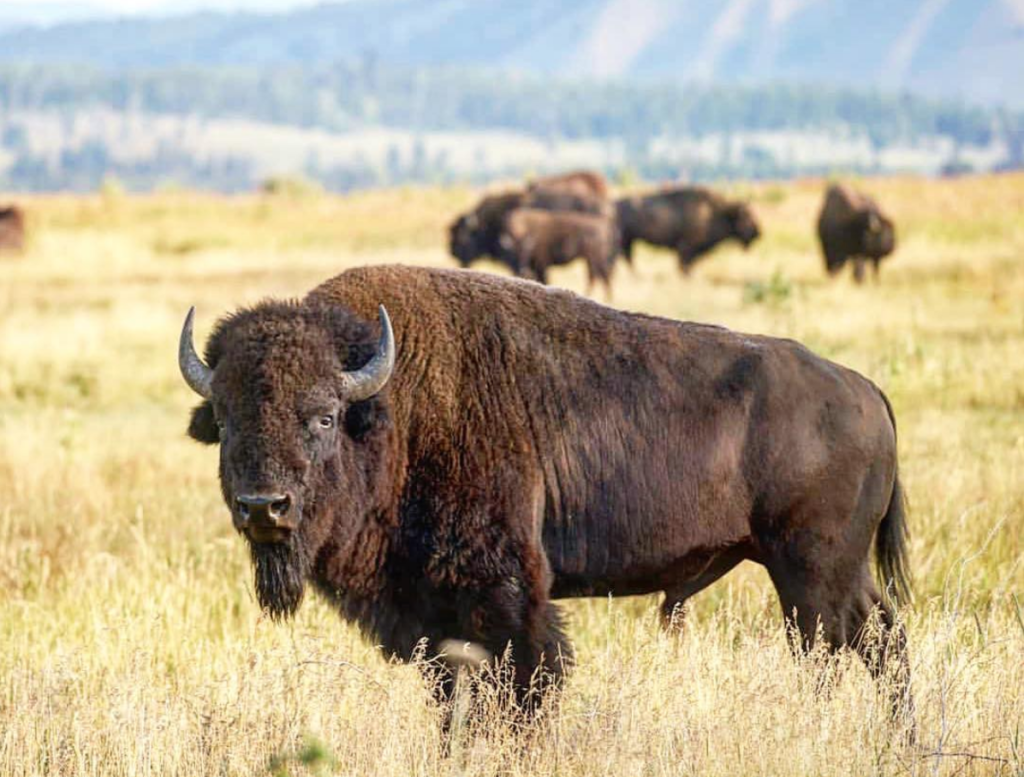If you asked our Wildlife Expeditions guides what the #1 question they get asked is, you’d probably hear something along the lines of this:
“What is the difference between a buffalo and a bison?”
Ask them the answer, and you’ll likely be taken on a brief foray into the world of the Linnean binomial nomenclature. So let’s dive in, shall we?
In the early years of modern science, one species of animal or plant could have many different names, not only from language to language, but region to region and even neighborhood to neighborhood. Likewise, one common name could be used for two very different species. This made communication between scientists difficult. The binomial nomenclature system–known today as “scientific name” or “latin name”–assigned genus (close family of related species) and species to all plants and animals. This allowed, for example, botanists from around the world to understand the name Achillea millefolium, when the common names included common yarrow, gordaldo, plumajillo, nosebleed plant, old man’s pepper, devil’s nettle, sanguinary, milfoil, soldier’s woundwort, and thousand-leaf. A lot less confusing if you ask us!
So what does the binomial nomenclature system have to do with the buffalo vs. bison debate? Well, both Buffalo and Bison are common names for the shaggy bovine that roams Grand Teton and Yellowstone National Parks and neither are incorrect. The scientific name for the American Bison is Bison bison and the European bison, or wisent, is known scientifically as Bison bonasus. These are the only two living members of the bison family.
Where confusion often ensues is between our wild North American bovines and the tropical buffalos we find in Africa and Asia. The Cape buffalo, Syncerus caffer, is found in sub-Saharan Africa and the water buffalo of Asia comes in both a domesticated species (Bubalus bubalis) and an endangered wild ancestor (Bubalus arnee). Both of these species have very large curly horns, short coats for a tropical climate, and a moderately sized hump. Both species of bison have short horns, thick shaggy coats for a cold climate and a massive hump that counterweights their low-mounted head. Genetically, bison are more closely related to domestic cattle than they are to cape or water buffalo. So wildlife guides, park rangers, and scientists prefer to use the common name bison over buffalo to avoid confusion between the species.
All this being said, the word buffalo is firmly embedded in our North American culture from years of use so we don’t get pedantic about common names. In fact, some of us even celebrate the variation in local names for the wildlife we encounter on our tours. “Bison Bill Cody” just doesn’t roll off the tongue like “Buffalo Bill Cody”. And ultimately, it means the same thing anyway.
Buffalo comes from the French for beef animal or ox, “boeuf”. And bison comes from the Greek word for beef animal or ox. We encourage our guests to use whichever word they feel comfortable with. After all, our shaggy friends don’t care what you call them! Just be aware that in one of our local restaurants, if you order a Buffalo Burger it is likely made with meat from a Bison bison/domestic cattle hybrid and if you order a Caprese salad with Buffalo mozzarella it is made with milk from a Bubalus bubalis.
Ready to learn more from a Wildlife Expeditions Guide? Book a trip with them here!
This post was written by Wildlife Expeditions Guide, Sarah Ernst.


